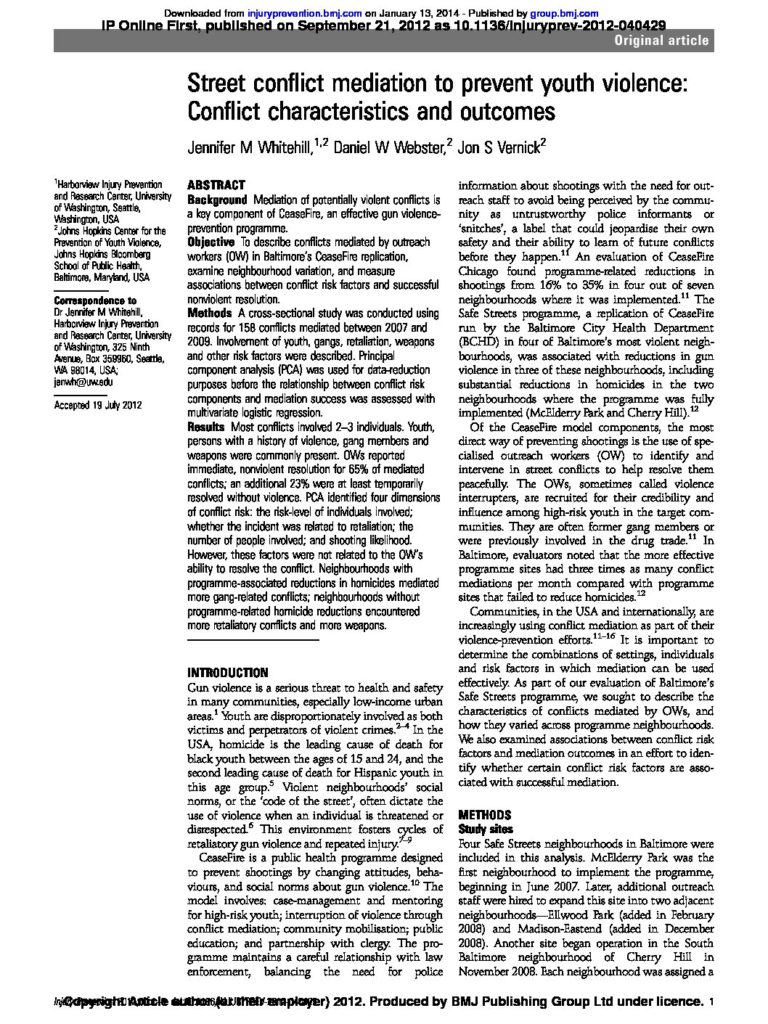
Street conflict mediation to prevent youth violence: Conflict characteristics and outcomes
Summary
This article was published in the journal Injury Prevention and distributed under the terms of a Creative Commons Attribution Non-commercial License.
Background: Mediation of potentially violent conflicts is a key component of CeaseFire, an effective gun violence-prevention programme.
Objective: To describe conflicts mediated by outreach workers (OW) in Baltimore’s CeaseFire replication, examine neighbourhood variation, and measure associations between conflict risk factors and successful nonviolent resolution.
Methods: A cross-sectional study was conducted using records for 158 conflicts mediated between 2007 and 2009. Involvement of youth, gangs, retaliation, weapons and other risk factors were described. Principal component analysis (PCA) was used for data-reduction purposes before the relationship between conflict risk components and mediation success was assessed with multivariate logistic regression.
Results: Most conflicts involved 2–3 individuals. Youth, persons with a history of violence, gang members and weapons were commonly present. OWs reported immediate, nonviolent resolution for 65% of mediated conflicts; an additional 23% were at least temporarily resolved without violence. PCA identified four dimensions of conflict risk: the risk-level of individuals involved; whether the incident was related to retaliation; the number of people involved; and shooting likelihood. However, these factors were not related to the OW’s ability to resolve the conflict. Neighbourhoods with programme-associated reductions in homicides mediated more gang-related conflicts; neighbourhoods without programme-related homicide reductions encountered more retaliatory conflicts and more weapons.
Discussion
Users can discuss this report and make suggestions for future updates. You must be signed in to submit a comment.
No comments
Join the conversation and
Become a Member Existing member loginbecome a member.